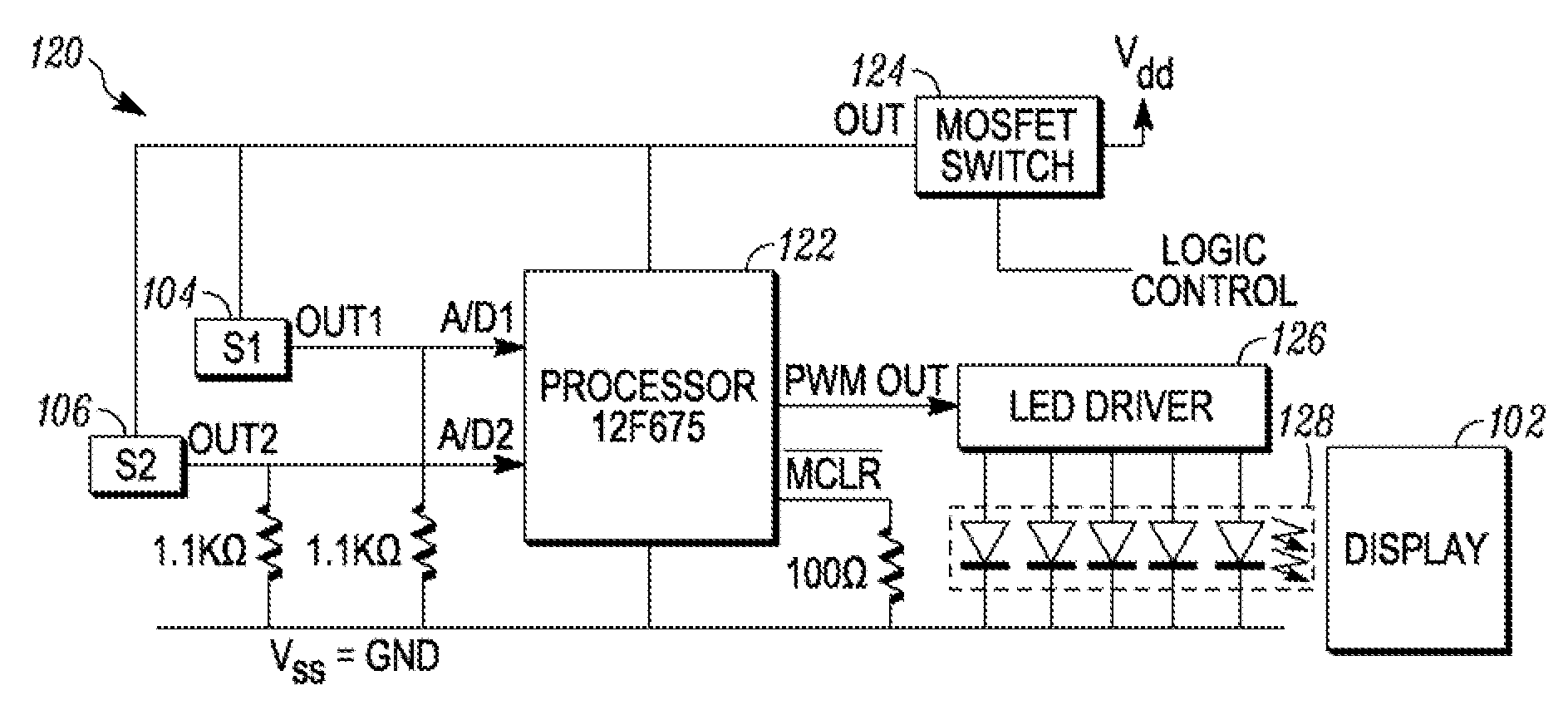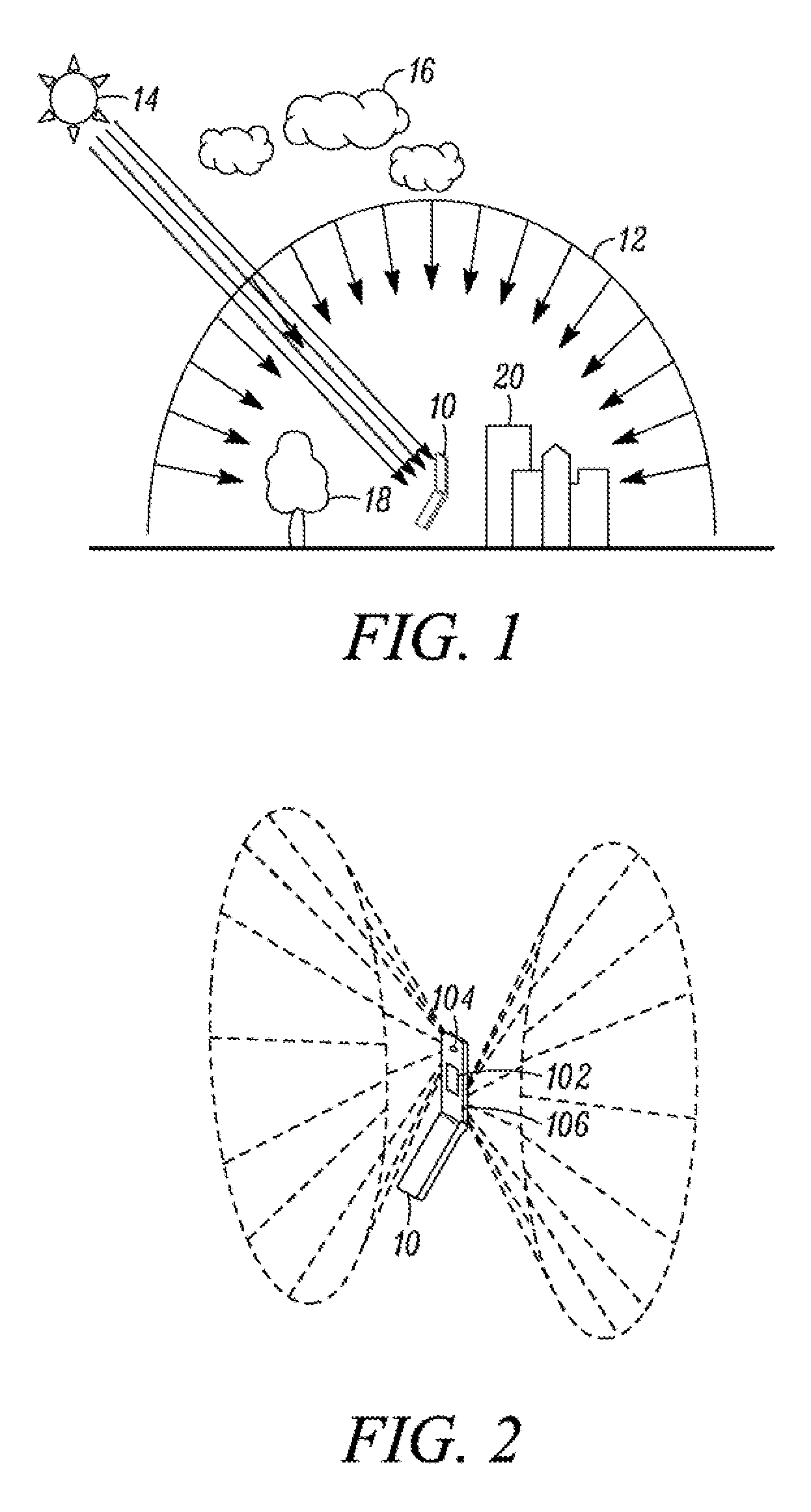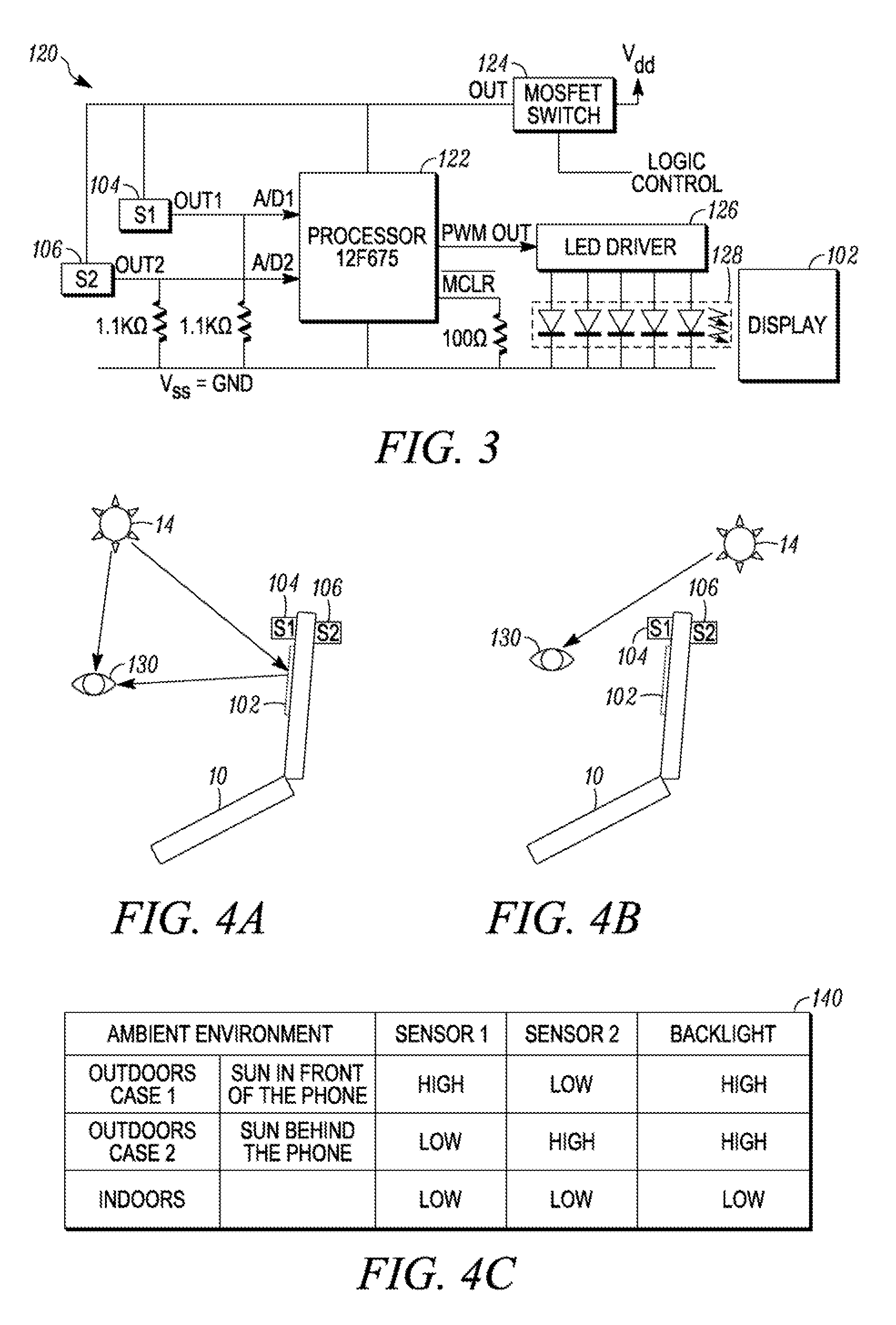Multiple light sensors and algorithms for luminance control of mobile display devices
a mobile display device and light sensor technology, applied in the field of display lighting systems, can solve the problems of backlighting of LCDs, display may be too bright, and difficult to view
- Summary
- Abstract
- Description
- Claims
- Application Information
AI Technical Summary
Benefits of technology
Problems solved by technology
Method used
Image
Examples
Embodiment Construction
[0021]A preferred embodiment of the invention is now described in detail. Referring to the drawings, like numbers indicate like parts throughout the views. As used in the description herein and throughout the claims, the following terms take the meanings explicitly associated herein, unless the context clearly dictates otherwise: the meaning of “a,”“an,” and “the” includes plural reference, the meaning of “in” includes “in” and “on.”
[0022]As shown in FIG. 1, the factors that influence perceptibility of a display 10 include: the intensity and direction of light from the sun 14, the diffusive properties of the atmosphere 12, the passing overhead of clouds 16, the shade of trees 18 and both shadows and reflections from buildings 20. As can be seen from FIG. 1, ambient light intensity cannot always be measured accurately by sensing in only one direction relative to the display. Therefore, one embodiment of a device 10 employing a display 102 that is lighted by a lighting unit, as shown ...
PUM
 Login to View More
Login to View More Abstract
Description
Claims
Application Information
 Login to View More
Login to View More - R&D
- Intellectual Property
- Life Sciences
- Materials
- Tech Scout
- Unparalleled Data Quality
- Higher Quality Content
- 60% Fewer Hallucinations
Browse by: Latest US Patents, China's latest patents, Technical Efficacy Thesaurus, Application Domain, Technology Topic, Popular Technical Reports.
© 2025 PatSnap. All rights reserved.Legal|Privacy policy|Modern Slavery Act Transparency Statement|Sitemap|About US| Contact US: help@patsnap.com



